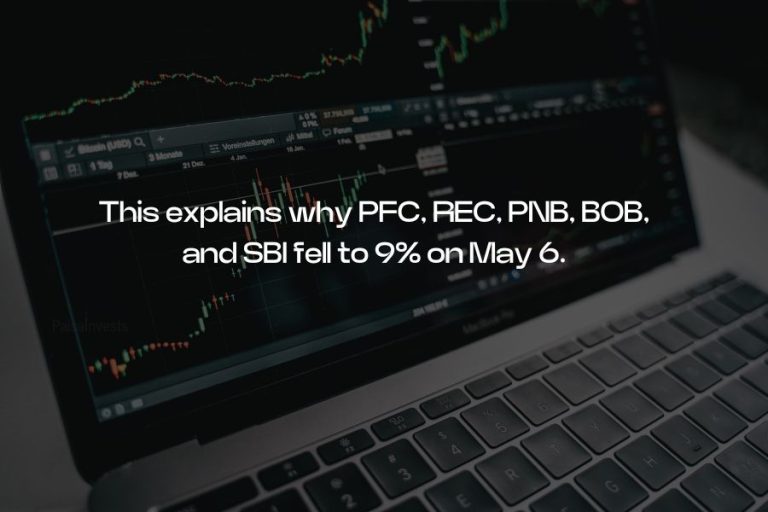On Friday, the RBI suggested to demand 5% standard asset in the construction phase and to impose a floor for banks’ loan exposure for project finance for consortium lending.
In Monday’s intraday trade on profit booking, shares of public sector banks (PSBs) and state financial institutions saw a 9 per cent decline on the BSE due to pressure from the Reserve Bank of India (RBI) proposing stricter guidelines for lending to projects that are currently being implemented.
In intraday trading on the BSE, Power Finance Corporation (PFC) plummeted 9% to Rs 438.10, while REC fell 7% to Rs 519.60. Notwithstanding the current downturn, PFC and REC had increased by 70% apiece over the previous half-year.
Punjab National Bank, Bank of Baroda, Canara Bank, Bank of India, State Bank of India, Union Bank of India, and UCO Bank saw declines ranging from 2 to 5 percent, among other PSU financials. By contrast, at 09:29 AM, the S&P BSE Sensex was up 0.5% at 74,242.
On Friday, the RBI suggested to demand 5% standard asset during the construction phase and to create a floor for banks’ credit exposure for project finance through consortium lending.
“In projects financed under consortium arrangements, where the aggregate exposure of the participant lenders to the project is up to Rs 1,500 crore, no individual lender shall have an exposure which is less than 10% of the aggregate exposure,” the central bank stated in the draft guidelines on the financing of project loans.
If implemented in its current form, analysts at JM Financial Institutional Securities predict that this will result in a considerable increase in the provisioning required, poorer returns for lenders in project finance, and a decrease in the incremental appetite for such exposures.
“While this is prudent from a risk management perspective, coming from the regulator’s experience in the last credit cycle, we believe this can be detrimental to growth in the capital intensive infrastructure sectors in the economy,” the brokerage added.
“We evaluated the increased credit costs for eight significant banks under our coverage, assuming these recommendations were to be issued in their current form, based on the institutions’ Pillar-3 disclosures. In FY25, we projected extra credit costs for HDFC Bank, ICICI Bank, Axis Bank, and Kotak Bank to be 6/10/7/6 bps. The additional credit costs for PSBs are anticipated to be between 12 and 21 basis points, according to analysts.
What CLSA stated regarding the evolution
Though the proposed rules will hinder PFC’s and REC’s capital sufficiency, CLSA analysts believe there won’t be any effect on their profit and loss (P&L).
All lenders must abide by the draft guidelines, although non-bank finance businesses (NBFCs) use IndAs accounting. As per current regulations, impairment reserves (equity line item) must be used to offset the gap in provision requirements between RBI guidelines and IndAs. The overall effect of greater standard assets on PFC and REC will be seen in their capital adequacy ratios rather than their P&Ls. The CLSA note stated, “PFC’s and REC’s most recent Tier 1 stood at 23% – they are well capitalized.”
Lenders are now required to retain a certain level of exposure inside a consortium, and they are only able to sell that exposure once the building phase is complete. CLSA stated that this is a major disincentive, along with stricter provision requirements.
“Private banks were anyway limited in their participation in thermal and hydro projects, and these new regulations may reduce the risk of higher competition from banks in the renewable segments as well,” the note from CLSA stated.
For More Visit: https://paisainvests.com/blog/
Disclaimer: The articles on PaisaInvests.com are solely for educational purposes. While we endeavor for accuracy, we make no guarantees regarding completeness or reliability. Readers are advised to conduct their own research and seek professional advice before making any financial decisions. We are not liable for any loss or damage incurred from the use of information provided. Additionally, we do not control the content of external websites linked within our articles.



